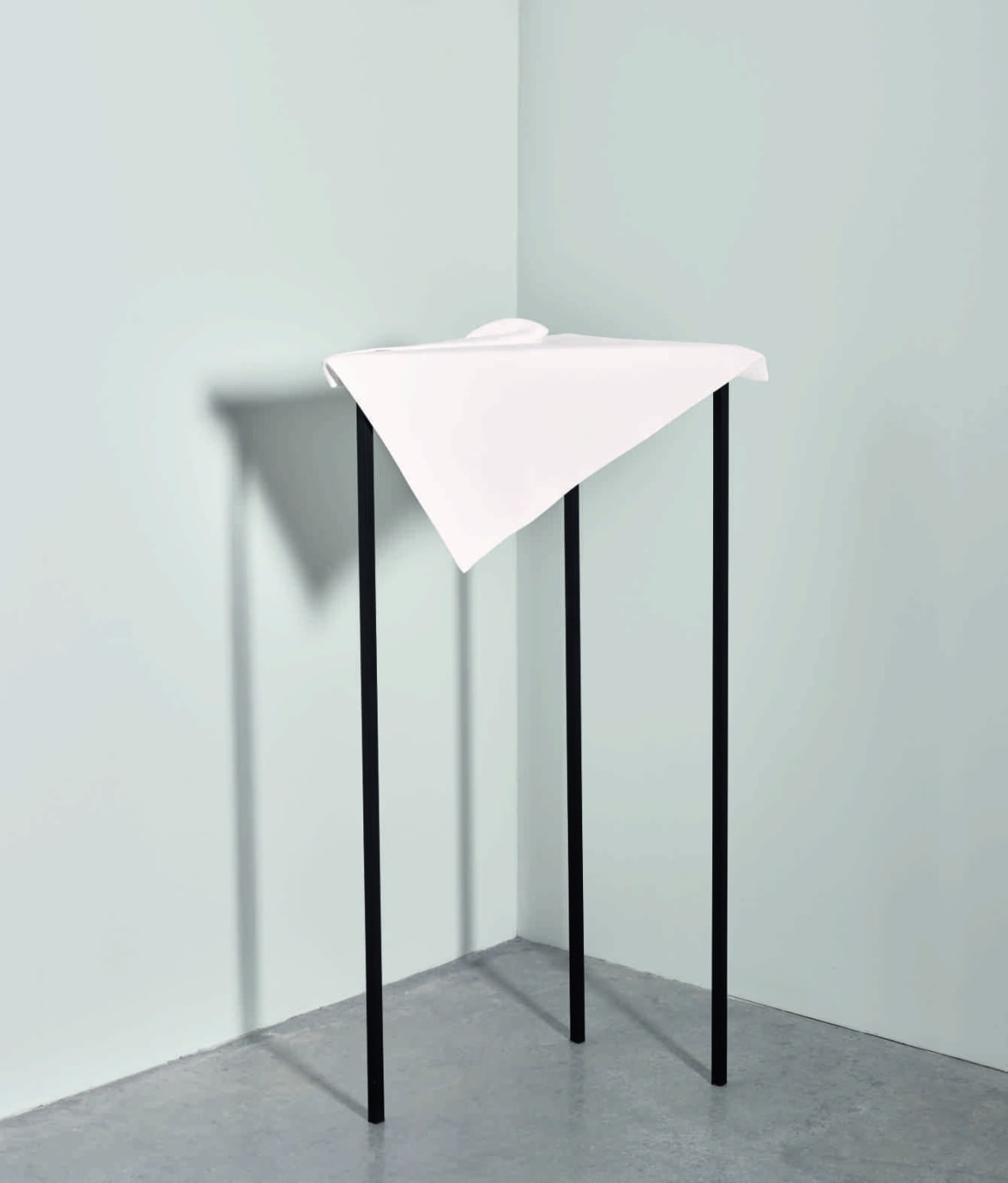The work of Lili Dujourie provokes an astutely intellectual yet poetic engagement with the world around us through various mediums, from painting and sculpture, to photography, collage, video and installation. Described as an ‘Old Master in Postmodern Garb’, Dujourie operates at the intersection of minimalism and conceptualism, consistently and systematically challenging the subject position of the viewer through clever experimentation with material and form. After making her debut with sculptures made of natural materials in the late 1960s and early 70s, Dujourie’s practice shifted into photography and the experimental realm of video art in the 1980s. With these new media, she embraced not only painterly and sculptural considerations but also the gender and identity-related issues of the time. The duality of movement and standstill inherent to film – as well as other juxtapositions – fed her later three-dimensional work. By transforming the physically and culturally determined properties of certain materials – such as velvet, marble, plaster, iron, lead and clay – the artist created sculptural forms that prompted deeper epistemological engagement. Indeed, all of Dujourie’s work questions the ‘truth’ value attributed to observation, suggesting instead that reality involves both acts of revealing and concealing, not only that which we can see but also that which is hidden from us.
Dujoure’s work features in numerous collections worldwide and has been the subject of important solo exhibitions, including ‘Folds in Time,’ held concurrently at S.M.A.K., Ghent, Belgium and Kunstmuseum aan Zee, Ostend, Belgium (2015); ‘La naturaleza es sabi,’ Abadía Benedictina de Santo Domingo de Silos, Burgos, Spain (2011); ‘Le Creux de L’enfer,’ Centre Centre d'Art Contemporain, Thiers, France (2008); ‘Jeux de Dames, Bozar,’ Brussels, Belgium (2005); and ‘Videos 1972-1981,’ Centro Andaluz de Arte Contemporaneo, Sevilla, Spain (2004), amongst others. Her work was recently featured in the group exhibition ‘The House of the Sleeping Beauties’ at Sotheby’s S|2 Gallery in London, with participation in other notable group exhibitions including ‘Sanguine. Luc Tuymans on Baroque,’Fondazione Prada, Milan, Italy; ‘Feminist Avant-Garde of the 1970s,’ Zentrum für Kunst und Medien, Karlsruhe, Germany; ‘Virginia Woolf – An Exhibition Inspired By Her Writings,’ Tate St. Ives, Cornwall, UK; ‘Superposition: Equilibrium and Engagement,’ 21st Biennale of Sydney, Art Gallery NSW, Australia (all 2018); as well ‘WACK!: Art and the Feminist Revolution’ at MOCA, Los Angeles, CA, USA (2007), the first institutional exhibition to comprehensively examine the influence of feminism in contemporary art.

